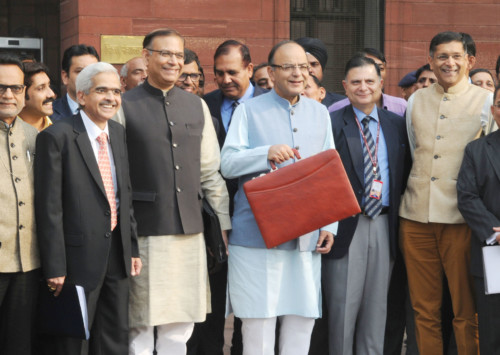Goods and Services Tax bill in India gets a go-ahead
Biz@India

Under the current system, a lot of time has to be spent at the state borders while importing or exporting goods
Ever since the first proposal of the Goods and Services Tax (GST) Bill in India in 2005, there has been a lot of delay and amendments. But after years of revisions, after the Bill was passed by Indian Parliament, it finally gives way to make all transactions liable to a unified tax across the country. This could help a lot Indian and foreign businesses, even if this is not a panacea and still a topic of political debate.
The Goods and Services Tax (GST) that was first proposed in 2005, by the then Union finance minister P. Chidambaram (Congress Party), is finally set to replace the existing tax regime in India after 11 years of its recommendation.
Under the current Indian Taxation System, central government collects Value Added Taxes (VAT) and levies income tax, customs duties, central excise, services, stamp duty, state excise, land revenue, etc. Furthermore, states also levy their own taxes that vary from one state to another, making it a complicated and non-unified system, involving a lot of paperwork and sometimes a lot of time spent at state borders, affecting the efficiency of the exporter’s/importer’s job. However, the introduction of GST will set forth a single tax structure, eliminating many centres and state taxes.
Goods and Services Tax Bill, also known as Constitution Bill 2014, will get things rolling with a national VAT, that will be an indirect tax on manufacture, sale and consumption of goods and services crosswise the country. GST will be levied at every stage of sale or purchase of goods or services and would allow GST registered trades to claim tax credit according to the amount of GST they pay on purchase of goods or services.
The bill process was tedious. After a report by the joint committee in 2007 and later by committee of state finance ministers, an amendment in the GST bill was proposed in Lok Sabha (Lower house of parliament) in 2011. The amended bill was taken into consideration and was approved in the Lok Sabha in 2014, under the BJP-led government of Narendra Modi, with the support of some regional parties and an opposition from Congress.
The changes were finally accepted by the Rajya Sabha on August 3, 2016 and then by the Lok Sabha on August 8. The bill will now have to be ratified by at least 16 Indian states out of 29 to be enforced as a law from April 1, 2017.
The rate of GST is yet to be decided by the states and the centre but the amount may be around 15 pc. Currently, services are taxed at 10 pc while the indirect tax on most goods is approximately 20 pc.
A cooperative federalism?
Even though the taxation frame has undergone many reforms in the past, GST may prove to be a game changer.
“GST can’t be seen as a victory of a party or government. It is the victory for the democratic ethos of India and a victory for everyone,” said Prime Minister Narendra Modi.
The bill focuses at involving state taxes because a single rate of GST will replace various taxes to ensure transfer of goods and services.
This may be a powerful change to knock out the outpour of many central and state taxes. Tax inequalities and intermediate barriers, that make some states more competitive than others, will be waived with the unification of taxes. It will also eliminate challenges for inter-state movement of goods and commerce and inter-state price differences along with reduced tax invasion.
However, it is difficult to say if the GST bill will make business simpler for producers and manufacturers of various products and services as many goods are outsourced. But the bill, on the long run, can create a win-win situation for consumers and small businesses as transparency will be a prime feature of the GST.













